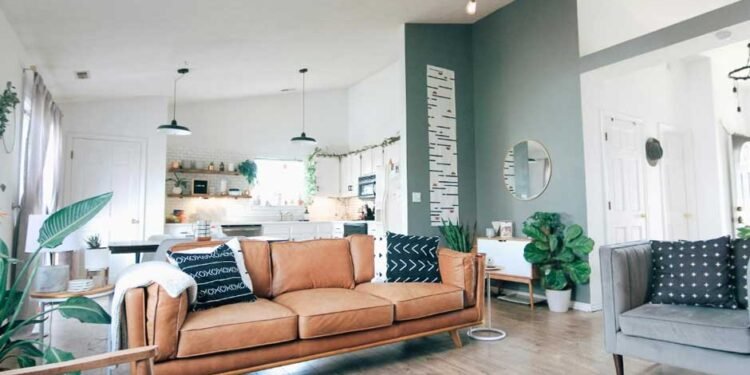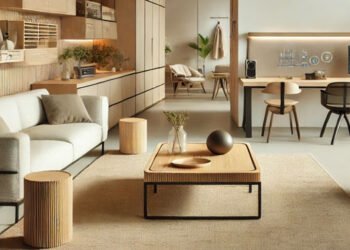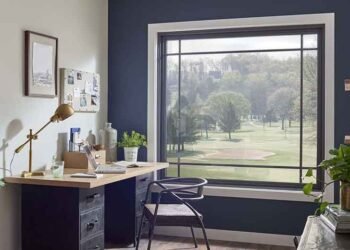The Power of a Well-Designed Space
Interior design is more than just paint colors and throw pillows. It’s about shaping the spaces we spend our lives in—places where we relax, work, socialize, and recharge. Whether you realize it or not, your surroundings have a huge impact on your mood, productivity, and even your health.
A well-designed room isn’t just beautiful; it functions smoothly, feels comfortable, and supports the way you live. When done right, design helps create a sense of balance between aesthetic and purpose, style and usability.
Why Interior Design Is Gaining Momentum
Over the last few years, there’s been a major shift in how people think about their homes. As remote work and hybrid lifestyles have become the norm, home isn’t just where we live—it’s where we do just about everything.
This shift has led to a rising demand for smart, intentional design. People are rethinking everything from furniture placement to lighting plans. They’re asking deeper questions, like how a room should make them feel, or how to turn a corner of a living room into a productive workspace.
In growing, vibrant areas like Northern Colorado, interest in Cascade Comfort Service in Anderson, CA, is on the rise as residents look for ways to refresh their spaces and create homes that reflect their personality and needs.
Functionality Comes First
One of the foundations of good interior design is function. You can have the most stylish room in the world, but if it doesn’t work for your day-to-day life, it’s going to fall short.
Designers start by learning how people use their space. Do you host large family gatherings? Need a home office? Want a cozy reading nook? Every design decision should support those daily habits.
This focus on functionality extends to layout, storage, furniture selection, and traffic flow. When these elements come together, they create a room that not only looks great but also feels effortless to live in.
How Color Affects Mood and Energy
Color plays a huge role in interior design because of the way it influences our emotions. Light blues and greens promote calm, while yellows and oranges can add energy and warmth. Neutrals tend to create a clean, grounded feeling, and darker tones can make a room feel cozy and intimate.
Choosing the right palette involves more than picking your favorite color. It’s about how the space will be used and what kind of energy you want to bring into it. A home office might benefit from a motivating tone, while a bedroom calls for something more restful.
In places with changing seasons like Colorado, color choices often reflect the local environment—warm neutrals for fall, crisp whites for snowy months, or earthy greens inspired by the outdoors.
Blending Styles and Personalities
One of the most exciting parts of design is the chance to mix styles in a way that feels fresh and personal. You don’t have to be a strict minimalist or maximalist. Most people fall somewhere in between, and a skilled designer knows how to bridge those preferences. Interior design experts like Ali & Shea specialize in creating these personalized, layered spaces that honor individual taste while maintaining visual harmony.
Blending vintage pieces with modern furniture, adding global-inspired accents, or layering different textures and materials can bring depth and personality to a room. The goal is to reflect who you are, not to replicate a showroom.
In areas like Fort Collins where the local style might combine rustic charm with clean modern lines, interior design is all about striking the right balance—honoring the regional aesthetic while still creating something unique to the homeowner.
Sustainability and Design
Another trend gaining momentum in interior design is sustainability. More people are becoming aware of how their homes impact the environment and want to make conscious choices.
This might look like using reclaimed wood, CoolJarz energy-efficient lighting, buying local furniture, or incorporating plants into the design. It also includes investing in high-quality pieces that last longer rather than buying fast-furniture that ends up in a landfill.
Sustainable design isn’t just better for the planet—it often leads to spaces that feel more grounded and thoughtful. And it can support local craftsmanship, especially in regions with a strong artisan culture.
Creating Cohesion Without Being Boring
Designing a home that flows well from one room to another doesn’t mean everything has to match. Cohesion can come from repeating certain elements—like color, shape, or texture—throughout the home without falling into monotony.
Maybe the kitchen and living room share the same wood tone, or a specific accent color appears in different forms in each space. These subtle links create visual continuity and a sense of harmony throughout the home.
At the same time, each room can have its own identity. A bathroom might lean spa-like and serene, while a dining area feels bold and dramatic. The key is to connect them thoughtfully.
The Emotional Connection to Home
At the end of the day, interior design is about emotion. It’s about creating a space that feels good to walk into, a place that reflects who you are and supports how you want to live.
This emotional connection often happens in small, meaningful ways—like a piece of artwork that tells a story, or a favorite chair that catches the morning light just right. These details make a house feel like home.
Good design isn’t about trends. It’s about intention, balance, and authenticity. And in communities that value individuality and creativity, like Fort Collins, that mindset is what makes the difference between a generic space and one that truly feels alive.
For anyone exploring how to elevate their space, working with someone who understands fort Collins interior design can help bring those ideas to life—turning vision into reality and creating a home that truly works for you.












